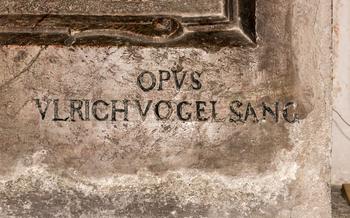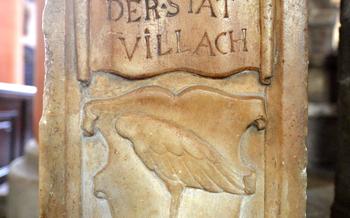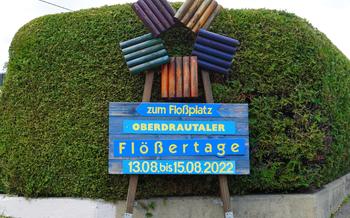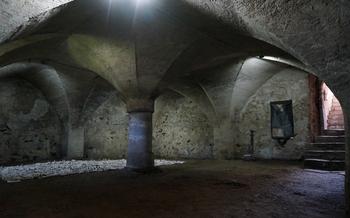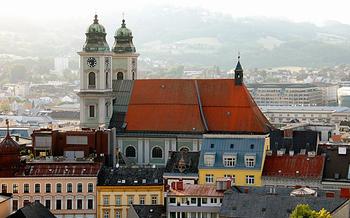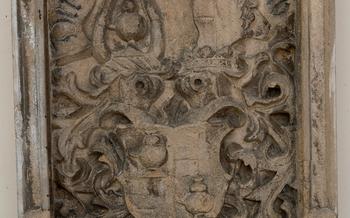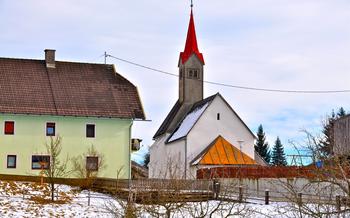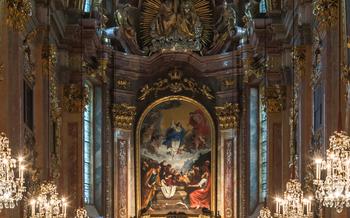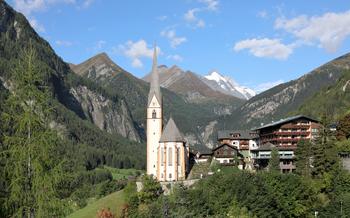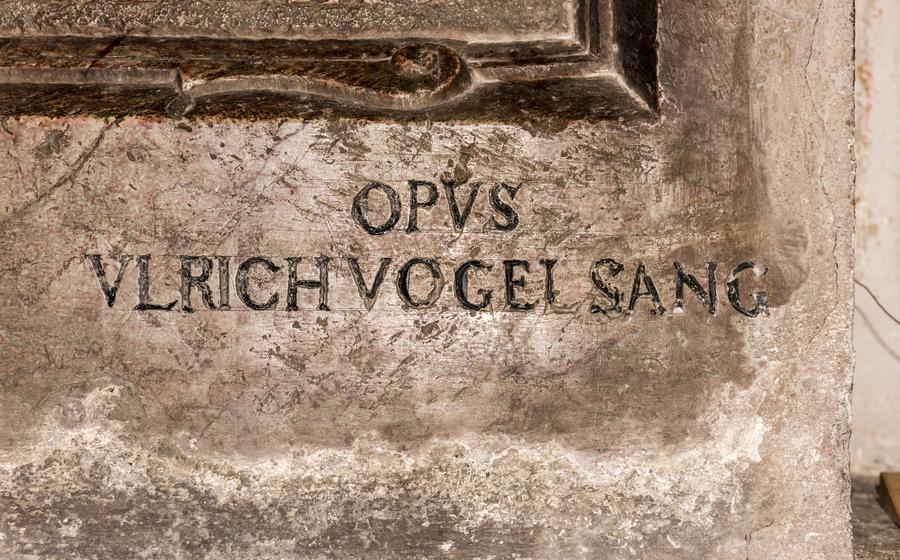
St. Jakob Church
- St. Jakob Church: An Architectural Masterpiece
- Location and Accessibility
- History of the Church
- Unique Features of the Church
- Guided Tours and Self-Exploration
- Mass Schedule and Religious Services
- Events and Concerts
- Pilgrimage and Religious Significance
- Nearby Attractions
- Local Cuisine and Restaurants
- Accommodations and Hotels
- Festivals and Cultural Events
- Photography Tips and Inspiration
- Souvenirs and Shopping
- A Local's Perspective: The Church's Hidden Gem
St. Jakob Church: An Architectural Masterpiece
Historical Significance
St. Jakob Church holds a prominent place in the history of Villach. Constructed in the 14th century, it replaced an earlier Romanesque church that stood on the same site. The church's Gothic architecture is a testament to the skill and artistry of medieval builders. Over the centuries, St. Jakob has undergone several renovations and expansions, reflecting the changing needs of the community and evolving architectural styles.
Architectural Style
The church exhibits a blend of Gothic and Baroque architectural elements. The exterior features flying buttresses, pointed arches, and intricate stone carvings that showcase the Gothic influence. The interior, however, is characterized by Baroque opulence, with ornate plasterwork, frescoes, and gilded altars adorning the walls and ceiling. This harmonious fusion of styles creates a unique and visually stunning space.
Interior Design
The interior of St. Jakob Church is a feast for the eyes. The nave is lined with majestic columns that support the vaulted ceiling. The intricate carvings on the capitals depict scenes from the Bible, adding a layer of symbolism to the church's design. The altarpieces are particularly noteworthy, featuring intricate woodwork and vibrant paintings that depict religious scenes. The stained-glass windows cast a colorful glow, illuminating the interior with a divine radiance.
Cultural Importance
St. Jakob Church is not only a religious landmark but also a significant cultural heritage site. It has been a place of worship, community gatherings, and artistic expression for centuries. The church's unique architecture and rich history make it a symbol of Villach's cultural identity and a source of pride for the local community.
Location and Accessibility
Address and Directions
The St. Jakob Church is conveniently situated in the heart of Villach, at Pfarrplatz To reach the church, you can either stroll along the scenic pedestrian streets or take a short drive from any part of the city. Its central location makes it easily accessible for visitors exploring Villach's historic center.
Public Transportation Options
For those using public transportation, the Villach Hauptbahnhof (central train station) offers a convenient starting point. From there, you can take bus line 5151 or 5170 and get off at the "Villach St. Jakob" stop, which is just a few steps away from the church. Alternatively, the Villach Busbahnhof (central bus station) is also within walking distance, with several bus lines connecting to the "Villach St. Jakob" stop.
Parking Availability
If you prefer to drive, there are several parking options near the St. Jakob Church. The Pfarrplatz car park, located directly opposite the church, offers convenient short-term parking. Additionally, there are several public parking garages within a short walking distance, such as the Karnerplatz garage and the Hauptplatz garage.
Accessibility for Disabled Visitors
The St. Jakob Church is committed to ensuring accessibility for visitors with disabilities. The church's main entrance is wheelchair accessible, and there is a designated area for wheelchair users inside the church. Additionally, the church provides assistive listening devices for visitors with hearing impairments.
History of the Church
The history of St. Jakob Church is a fascinating journey through centuries of religious devotion and architectural evolution. The original church structure dates back to the 12th century, when a small Romanesque chapel stood on the site. Over time, the chapel underwent significant expansions and modifications, reflecting the growing importance of the parish and the changing tastes of the era.
In the 14th century, the church was enlarged to accommodate the growing number of worshippers. A Gothic choir was added, featuring intricate ribbed vaults and pointed arches, which remain some of the church's most distinctive features. During the 16th century, the church underwent further renovations, adopting elements of the Renaissance style, including classical columns and ornate decorations.
A major transformation occurred in the 18th century when the church was extensively remodeled in the Baroque style. The interior was adorned with opulent frescoes, gilded altars, and intricate carvings, creating a sense of grandeur and awe. The exterior was also modified, with the addition of a new bell tower and a monumental staircase leading to the main entrance.
Throughout its history, St. Jakob Church has played a central role in the spiritual and social life of Villach. It has witnessed countless baptisms, weddings, and funerals, serving as a gathering place for the community to celebrate, mourn, and seek solace. The church has also been a site of pilgrimage for centuries, attracting believers from across the region who come to pray and pay homage to the sacred relics housed within its walls.
Unique Features of the Church
The St. Jakob Church stands out for its remarkable architectural elements and distinctive interior decorations. Its intricate stained glass windows, crafted by skilled artisans, depict biblical scenes and saints with vibrant colors and intricate details. The ornate ceiling frescoes, created by renowned artists, showcase religious motifs and celestial imagery, adding a touch of grandeur to the church's interior.
The church also houses several historical artifacts and artwork of great significance. The 15th-century wooden sculptures, representing various saints and figures from the Bible, are particularly noteworthy for their exquisite craftsmanship and attention to detail. Additionally, the Gothic-style stone carvings, adorning the exterior of the church, depict scenes from the life of Jesus and add to the church's overall aesthetic appeal.
Among the unique features of the St. Jakob Church is its impressive organ. Built in the 18th century, this magnificent instrument boasts over 2,000 pipes and is renowned for its rich and powerful sound. Regular organ concerts are held in the church, allowing visitors to experience the instrument's grandeur and enjoy the beautiful music it produces.
Guided Tours and Self-Exploration
St. Jakob Church offers guided tours that provide an in-depth exploration of its history, architecture, and religious significance. Knowledgeable guides share captivating stories and insights, bringing the church's past to life. Tours are available in multiple languages, including English, German, and Italian, ensuring accessibility for visitors from around the world.
For those who prefer a more independent experience, self-guided exploration is also an option. Visitors can wander through the church at their own pace, admiring the intricate details and absorbing the tranquil atmosphere. Information boards and brochures are available to provide additional context and historical facts.
Admission to the church is free of charge, making it an accessible attraction for travelers of all budgets. Whether you choose to join a guided tour or explore on your own, St. Jakob Church offers a rewarding experience for history buffs, architecture enthusiasts, and pilgrims alike.
Mass Schedule and Religious Services
The St. Jakob Church is not only a breathtaking architectural marvel but also a vibrant spiritual center of the community. Catholics and visitors alike are welcome to attend regular masses and special services held throughout the week. The church's mass schedule is designed to accommodate the diverse needs of the congregation, with services in both German and English.
Regular Mass Schedule:
- Sunday Mass: 9:00 AM, 10:30 AM (English), and 6:00 PM
- Weekday Masses: Monday-Friday at 8:00 AM
Special Services and Events:
In addition to regular masses, the St. Jakob Church hosts various special services and events throughout the year. These include:
- Christmas Eve Mass: Celebrated on December 24th at 6:00 PM
- Easter Vigil Mass: Held on Holy Saturday at 8:00 PM
- Pentecost Mass: Celebrated on the 50th day after Easter at 9:00 AM
- Patron Saint's Day Mass: Honoring St. Jakob on July 25th at 6:00 PM
- Seasonal and Thematic Masses: The church also holds special masses during Advent, Lent, and other significant periods of the liturgical calendar.
Dress Code and Etiquette:
When attending mass or any religious service at the St. Jakob Church, appropriate attire and respectful behavior are expected. Visitors are encouraged to dress modestly, avoiding shorts, tank tops, or revealing clothing. Maintaining silence and refraining from distractions during the service is essential to uphold the sacredness of the occasion.
Opportunities for Spiritual Reflection:
Beyond attending services, the St. Jakob Church provides ample opportunities for spiritual reflection and contemplation. Visitors can find solace and inspiration within the church's tranquil interior, adorned with beautiful stained-glass windows and intricate carvings. Personal prayer and meditation are welcome, allowing individuals to connect with their faith and seek inner peace.
Events and Concerts
The St. Jakob Church is not only a sacred space but also a vibrant venue for cultural events and concerts. Throughout the year, the church hosts a diverse range of performances, from classical music concerts to contemporary art exhibitions. These events provide an opportunity for visitors to experience the church's unique atmosphere and acoustics while enjoying world-class entertainment.
Classical music concerts are a regular feature at the St. Jakob Church, showcasing the talents of renowned musicians and ensembles. The church's grand interior, with its soaring arches and intricate stained glass windows, creates an immersive and intimate setting for these performances. Visitors can immerse themselves in the harmonious melodies of string quartets, the virtuosic solos of pianists, or the powerful voices of choirs filling the sacred space.
In addition to classical music, the St. Jakob Church also hosts contemporary art exhibitions, showcasing the works of local and international artists. These exhibitions often explore themes related to spirituality, faith, and the human condition, inviting visitors to contemplate the deeper meanings behind the church's architecture and history.
Ticket prices for events and concerts vary depending on the nature of the performance and the artist. Advance reservations are recommended to secure a seat, especially for popular events. The church's website and local tourist information centers provide up-to-date information on upcoming events and concerts.
Past highlights at the St. Jakob Church have included performances by renowned classical musicians such as the Vienna Philharmonic Orchestra and the Salzburg Festival Orchestra. The church has also hosted exhibitions by contemporary artists such as Friedensreich Hundertwasser and Arnulf Rainer, attracting art enthusiasts from around the world.
Upcoming events at the St. Jakob Church include a series of organ concerts featuring international organists, as well as an exhibition of religious art from the Middle Ages. Visitors are encouraged to check the church's website or contact the parish office for the latest information on upcoming events and to plan their visit accordingly.
Pilgrimage and Religious Significance
The St. Jakob Church holds profound religious significance as a popular pilgrimage site. It has attracted devout Christian pilgrims for centuries, seeking spiritual enlightenment and blessings. The origins of these pilgrimages can be traced back to the Middle Ages, when the church gained fame for its miraculous healings and answered prayers. Over time, pilgrims from near and far flocked to the church to pay homage to the sacred relics and statues enshrined within.
The pilgrimage routes to the St. Jakob Church have become deeply ingrained in the religious traditions of the region. Pilgrims embarking on these journeys often follow ancient paths that wind through picturesque landscapes, passing by chapels and wayside shrines. Along the way, they recite prayers, sing hymns, and engage in spiritual reflections. The culmination of their pilgrimage is the arrival at the St. Jakob Church, where they offer their prayers and seek divine guidance.
The interior of the church exudes an aura of sacredness, with its intricate artwork, stained-glass windows, and ornate altars. Pilgrims find solace and inspiration as they kneel before the revered statues, light candles, and pray for blessings. The church also hosts special masses, prayer services, and confessionals, providing opportunities for pilgrims to deepen their faith and connect with the divine.
For many pilgrims, the journey to the St. Jakob Church is not just about reaching a destination but about the transformative experience of the pilgrimage itself. It is a journey of self-discovery, reflection, and spiritual renewal. The church's enduring significance as a pilgrimage site continues to draw countless believers seeking solace, hope, and a deeper connection with their faith.
Nearby Attractions
St. Jakob Church is surrounded by a treasure trove of attractions that offer visitors a rich tapestry of history, culture, and scenic beauty. Just steps away, the Villach Hauptplatz, the city's main square, beckons with its vibrant atmosphere, colorful buildings, and charming cafes.
For a deeper dive into the region's history, the Villach Museum showcases captivating exhibits on the city's past, from prehistoric times to the present day. Art enthusiasts will find solace in the Museum der Moderne, which displays an impressive collection of contemporary art from both local and international artists.
Nature lovers can embark on a leisurely stroll through the idyllic Villacher Stadtpark, with its serene ponds, manicured gardens, and playgrounds. For a more adventurous escapade, the Dobratsch Nature Park, with its towering peaks, lush forests, and crystal-clear lakes, offers a haven for hiking, biking, and wildlife spotting.
Shopping enthusiasts can indulge in a retail therapy session at the Villach Atrio, a modern shopping center with a wide range of stores, from international brands to local boutiques. The Villacher Wochenmarkt, a bustling weekly market, offers a vibrant array of fresh produce, handmade crafts, and local delicacies.
Local Cuisine and Restaurants
The region of Carinthia, where Villach is situated, offers a rich culinary experience. Savor regional delicacies such as the iconic Kärntner Kasnudeln, a type of pasta filled with potatoes and cottage cheese, often served with browned butter and chives. Indulge in Reindling, a sweet braided bread filled with nuts and raisins, a traditional treat that reflects Carinthia's culinary heritage.
For a memorable dining experience, venture into the heart of Villach and explore the charming streets surrounding the St. Jakob Church. Discover hidden gems like the traditional Gasthof Post for a taste of authentic Austrian cuisine. The establishment has been serving culinary delights for over a century and offers a cozy ambiance, making it a local favorite.
Vegetarians and vegans can also relish the culinary offerings of Villach. Das kleine Café is a delightful spot known for its creative plant-based dishes, including mouthwatering vegan burgers and colorful salads. For a quick and healthy bite, visit the Villacher Wochenmarkt, a vibrant market held every Saturday, where you can find fresh produce, local cheeses, and artisanal bread.
Remember to pick up some local delicacies as souvenirs to savor the flavors of Villach once you return home. Visit specialty shops like Käseladen Villach for a variety of regional cheeses or Schokolade Manufaktur for handmade chocolates infused with local ingredients.
Accommodations and Hotels
When planning your visit to Villach and the St. Jakob Church, finding suitable accommodations is essential. The area offers a range of options to suit different preferences and budgets.
For those seeking convenience, several hotels are located within walking distance of the church. These establishments provide comfortable rooms, modern amenities, and easy access to the city center's attractions. Look for hotels like Hotel Palais26 or Hotel Warmbaderhof, which offer elegant accommodations and convenient locations.
For a more immersive experience, consider staying at a charming bed and breakfast. These cozy establishments often offer a homey atmosphere, personalized service, and delicious local breakfasts. Bed and Breakfast Haus Rosengarten and Frühstückspension Rabitsch are popular options that offer a warm and welcoming stay.
If you're looking for a unique or themed accommodation, consider staying at a historic building or a traditional Austrian guesthouse. These establishments provide a glimpse into the region's rich history and culture. Hotel Post Villach and Gasthof Hotel Moserhof are excellent choices for those seeking a distinctive lodging experience.
To find the best deals on accommodations, it's advisable to book in advance, especially during peak tourist season. Online booking platforms and travel agents can help you compare prices and find discounts. Additionally, consider visiting during the off-season (October to April) to enjoy lower rates and fewer crowds.
Festivals and Cultural Events
The region surrounding St. Jakob Church is renowned for its vibrant festivals and cultural events that showcase the rich heritage and traditions of Carinthia. These events provide visitors with an immersive experience of Austrian culture, allowing them to witness traditional performances, parades, and celebrations.
One of the highlights is the annual Villach Kirchtag, a week-long festival held in July. This lively event features traditional music and dance performances, colorful parades, and a variety of food and drink stalls. Visitors can enjoy live concerts, watch traditional Schuhplattler dance performances, and sample local delicacies such as Carinthian Kasnudeln (pasta pockets filled with cheese and herbs) and Villacher Bier (local beer).
Another popular event is the Villach Christmas Market, held in the historic city center during the festive season. The market offers a magical atmosphere with twinkling lights, wooden stalls selling handmade crafts and gifts, and the aroma of mulled wine and roasted chestnuts filling the air. Visitors can find unique souvenirs, indulge in traditional Christmas treats, and enjoy live music performances.
Throughout the year, the region hosts various other cultural events, including art exhibitions, theater performances, and concerts. These events provide an opportunity for visitors to delve deeper into Austrian culture and appreciate the region's vibrant arts scene.
Photography Tips and Inspiration
The St. Jakob Church offers awe-inspiring photo opportunities for both professional photographers and casual enthusiasts. To capture the essence of this architectural masterpiece, consider the following tips:
-
Natural Lighting: Visit the church in the morning or late afternoon when the golden light illuminates the intricate details of the facade.
-
Unique Perspectives: Try shooting from lower angles to emphasize the towering height of the bell tower, or from a high viewpoint to showcase the panoramic beauty of the surrounding cityscape.
-
Composition Elements: Use the church's archways, columns, and stained glass windows to create dynamic compositions that draw the eye into the image.
-
Interior Beauty: Don't forget to explore the interior of the church, where you can capture the serene atmosphere, intricate frescoes, and stunning altarpieces.
-
Instagrammable Spots: For social media enthusiasts, the courtyard of the church provides a picturesque backdrop for captivating photos.
Remember to be respectful of the religious significance of the church and avoid using flash or causing disturbances during services or events. Capture the essence of this sacred space with your lens and share your beautiful shots with the world.
Souvenirs and Shopping
The St. Jakob Church offers a small but charming gift shop where visitors can purchase a variety of souvenirs and religious mementos. Here, you can find an assortment of items such as postcards, magnets, keychains, and various religious artifacts. The shop also sells unique and locally crafted souvenirs, such as hand-painted ceramics, wooden carvings, and traditional Austrian crafts. These items make for thoughtful gifts or a lasting memento of your visit to the church. By purchasing souvenirs from the gift shop, you not only take home a piece of the church's history but also support local artisans and businesses, contributing to the preservation of Austria's rich cultural heritage.
A Local's Perspective: The Church's Hidden Gem
As a local, I've spent countless hours exploring every nook and cranny of St. Jakob Church. One of my favorite hidden gems is the small chapel tucked away behind the main altar. This intimate space is adorned with exquisite frescoes depicting scenes from the life of St. James, the church's patron saint. The intricate details and vibrant colors of these murals transport me back in time, creating a truly immersive and spiritual experience.
The chapel also houses a remarkable collection of religious artifacts, including a beautifully preserved 15th-century crucifix. It is said that this crucifix has miraculous powers, and many pilgrims have come to the chapel over the centuries to pray for healing and guidance.
What makes this hidden gem even more special is the sense of tranquility it offers. While the main church can be quite crowded during peak tourist season, the chapel provides a serene and peaceful retreat where one can truly connect with their spirituality and find solace.
